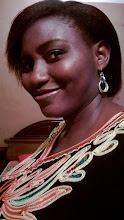Good morning, fans.
ÀYÀN ÀGALÚ IS DRUMMING A NEW WORLD at the Drumming New Worlds Art Exhibition.
Date: Wednesday, December 13, 2023
Venue: Untitled Lagos,
59, Raymond Njoku Street, Ikoyi, Lagos
Time: 6 p.m.
The exhibition ends on January14, 2024.
You can watch my third and fourth Performance Art Exhibitions at the opening and closing ceremonies.
I am ÀYÀN ÀGALÚ!
I am the MOTHER DRUM!
I am a WOMAN pregnant
with ideas.
I conceived the design of
the YORÙBÁ DÙNDÚN TALKING DRUMS in my head.
I birthed these twins
from my womb.
These twins also gave
birth to quadruplets and more children.
How did I do it?
Come and find out! 
To attend, send me a
message for your RSVP.
 Disc Jockey DJ Ìràwọ̀
Disc Jockey DJ Ìràwọ̀
 Drum Jamming Ìràwọ̀
Drum Jamming Ìràwọ̀
 The Àyàn Àgalú Amazon
The Àyàn Àgalú Amazon
 The Talking Drum Magician
The Talking Drum Magician
 The Talking Drum Ambassador
The Talking Drum Ambassador
 The Ìyálóde Ìràwọ of Yorùbá Classes.
The Ìyálóde Ìràwọ of Yorùbá Classes.
 The Àlímọ̀sọ́ Art and Culture Ambassador.
The Àlímọ̀sọ́ Art and Culture Ambassador.
 The Nigerian Art, Music, Culture and Tourism Export.
The Nigerian Art, Music, Culture and Tourism Export.
#djirawo
#ayanagalu
#performanceartist
#femaletalkingdrummer










-2.jpg)


-2.jpg)



-2.jpg)




-2.jpg)






-2.jpg)

-2.jpg)


-2.jpg)






-2.jpg)


-2.jpg)



















































































